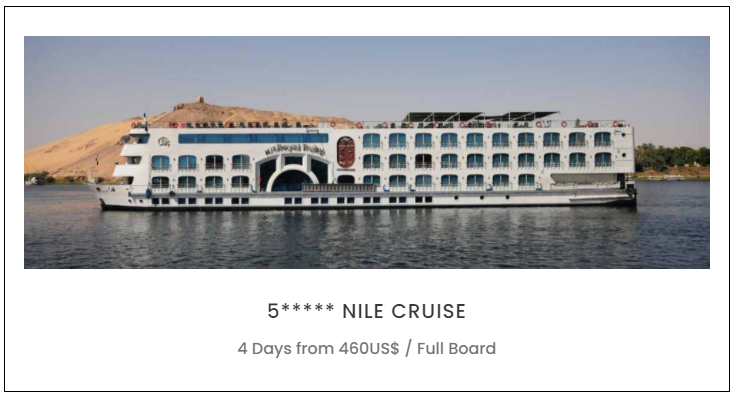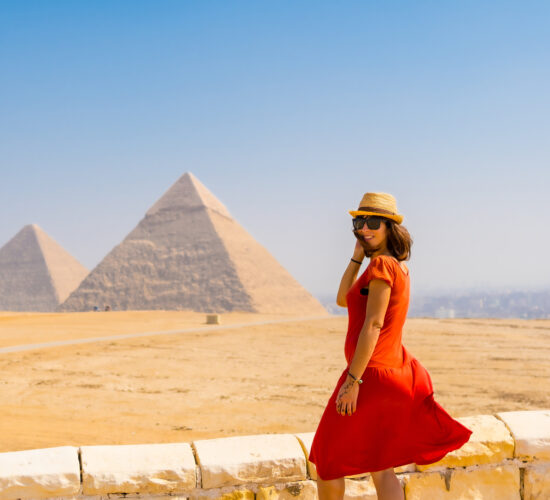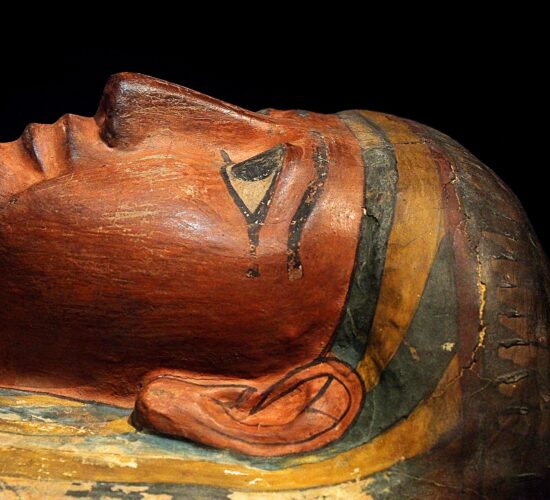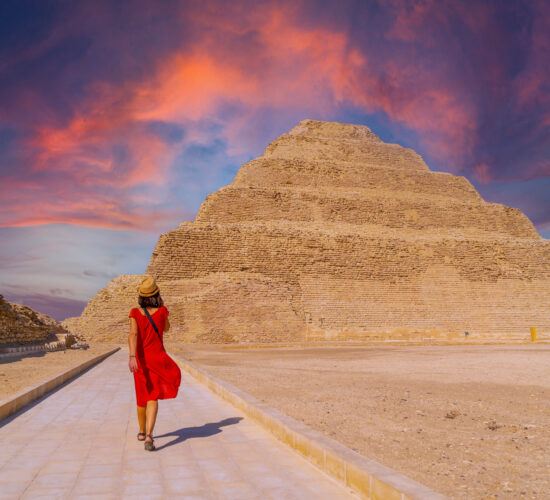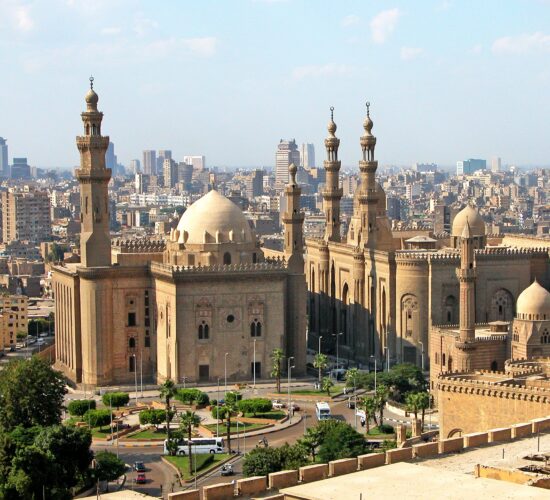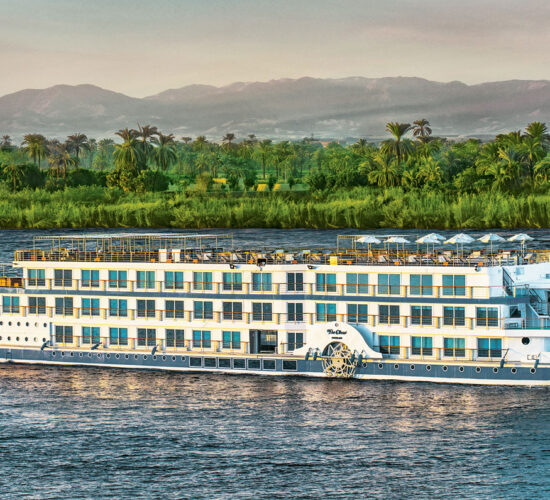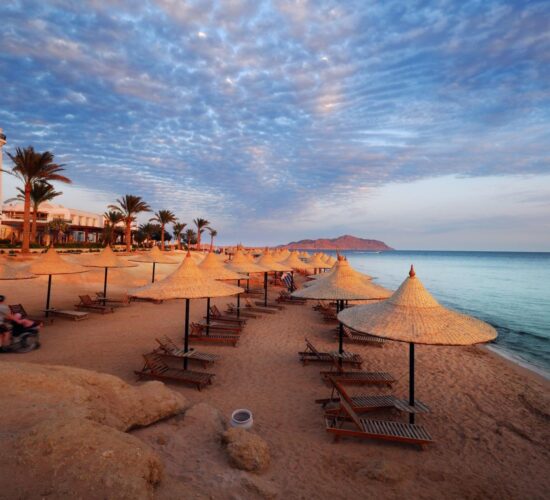Cruising the Nile in Egypt
Introduction
The world’s longest river and its extraordinary monuments, the stunningly fertile valley and the barren beauty of the surrounding desert, the light and heat, and the joy of slow travel in a superfast world all add up to one of the highlights of a trip to Egypt, or anywhere in the world. Cruising the Nile is one of Egypt’s iconic experiences. Without the Nile, Egypt’s grand Pharaonic civilization would never have survived and thrived across the centuries, dominating so much of what we know about the eastern Mediterranean’s ancient world. Today, the Nile still controls modern Egypt, with around 95 percent of the population living along its banks and in the river’s delta region before it spills into the Mediterranean. A cruise along this river is a journey into Egypt’s epic human history; the river banks are scattered with Egypt’s most famous vast temples and painted tomb sites. It’s also a taste of Egypt’s most lush and tranquil and an up-close experience of the country’s rural riverine scenery. Before you head to Egypt, use our complete guide to cruising the Nile to help plan your trip.
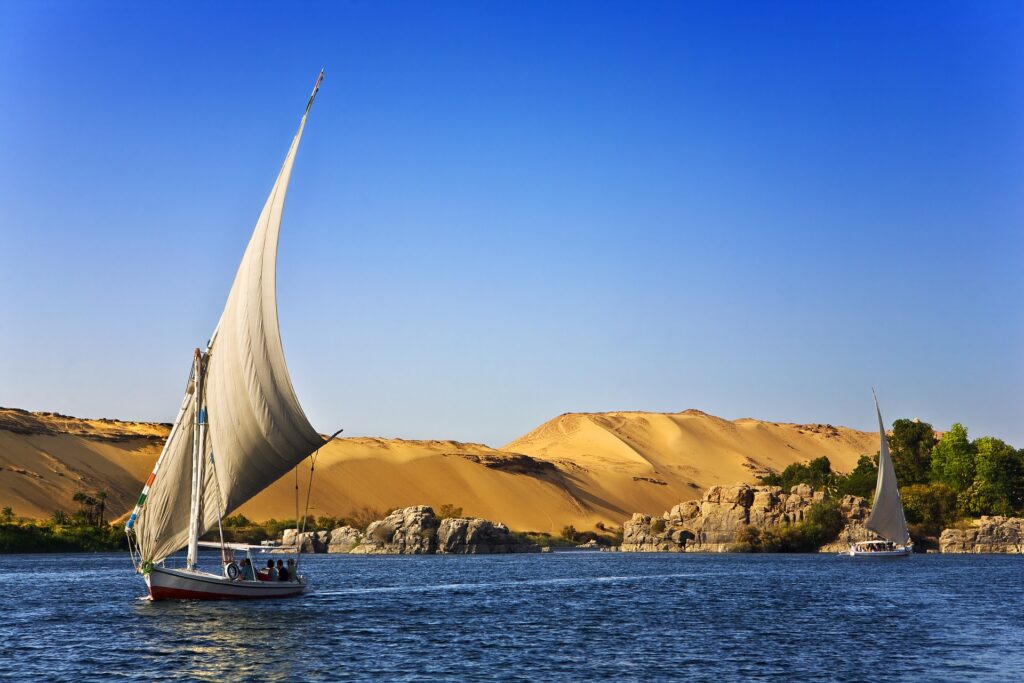
Why Cruise the Nile
Rain seldom falls on this part of the Nile Valley, so the country would simply not exist without the river. Ancient Egyptians recognized this fact when they likened their land to a lotus – the delta was the flower, the oasis of Al Fayoum the bud, and the river and its valley the stem that supported them all. But rather than the practical use of the waterway, the Nile’s beauty strikes travelers most: the soft light of its mornings, the lushness of the plants and trees that grow along its banks, the thrill of flights of birds that shuttle up- or downriver on their migrations, the patience of fishermen, rowing out in the morning to cast their nets, the greatness of it all.
Cruise Tips
- When to travel: Summer (June to August) can be scorching and is the cheapest season to cruise. Christmas and Easter are usually the busiest and most expensive. Spring and autumn are ideal, with the light being perfect in October and November.
- Where to start: Most cruises from Luxor are a day longer than those from Aswan, partly because they go against the Nile’s strong current. If you want to spend longer in Luxor or are concerned about cost, start from Aswan and head north.
- Cabin choice: On cruisers, try to avoid the lowest deck. Many boats have decent views from all cabins, but the banks of the Nile are high (and get higher as the river level drops), and you want to see as much as possible. Ask for a deck plan when booking.
- Sailing time Many passengers on Nile cruisers are surprised by how little time is spent cruising – the boats’ large engines cover distances relatively quickly, and cruise times are often only four hours per day. On some itineraries, you only spend one night en route.
Nile Facts
As the world’s longest river, the Nile cuts through 11 countries and an incredible 6680km of Africa as it winds north towards the Mediterranean Sea. It has two primary sources: Lake Victoria in Uganda, out of which flows the White Nile, and Lake Tana in the Ethiopian highlands, from which the Blue Nile emerges. The two rivers meet at Khartoum in Sudan. Some 320km further north, they are joined by a single tributary, the Atbara. From here, the river flows northwards to its end without any other tributary, and almost no rain adds to its waters.
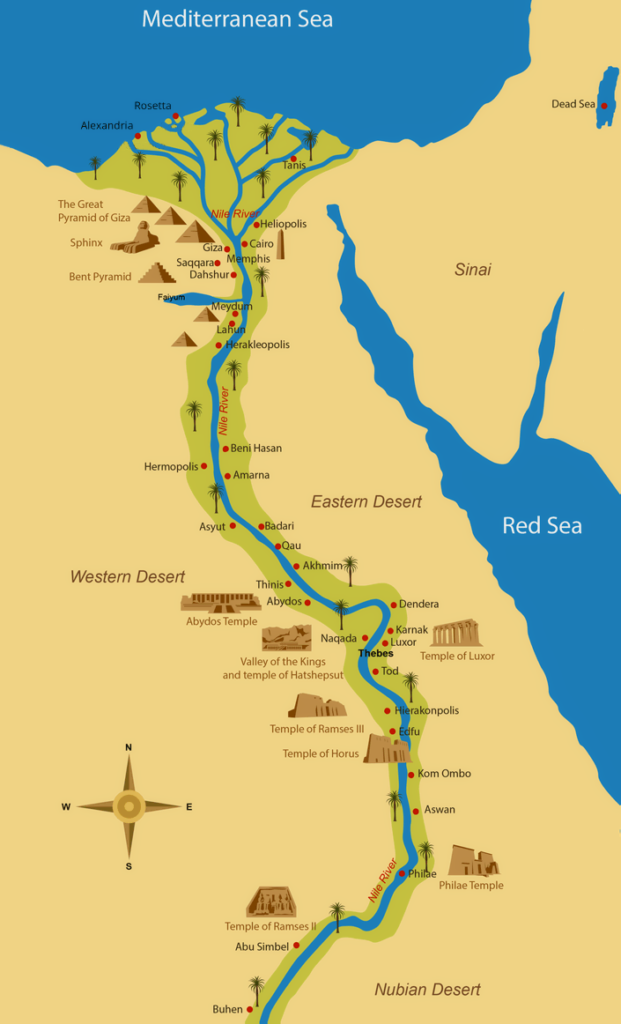
River travel was so central to the ancient Egyptian psyche that it seemed apparent that the sun god Ra traveled through the sky in a boat and that the dead would sail to the afterlife. The earliest boats will likely have been simple skiffs made of papyrus bundles, which are best for hunting and traveling short distances. Ancient Egyptians then developed elaborate wooden ships powered by multiple sets of oars, a long, narrow sail, and a steering oar that later evolved into a rudder. The most elaborate surviving example of an ancient boat was among Pharaoh Khufu’s funerary goods and can be seen at the Cheops Boat Museum at the Pyramids of Giza. Numerous models of simpler boats have been found in tombs.
Nile Cruisers
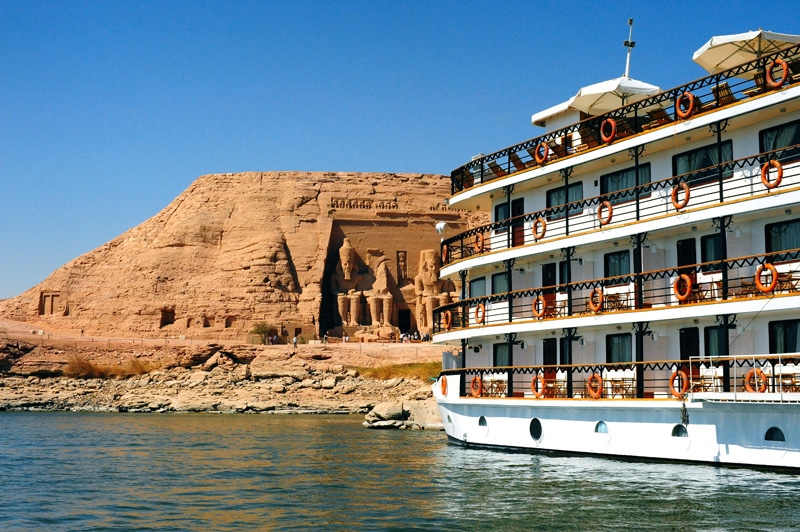
The most popular way to take a Nile cruise is on one of the big Nile cruiser boats. Think of a Nile cruiser as a floating hotel. Every day, onboard amenities include a sundeck (or sundecks) with a pool and restaurant. Like hotels, there are many Nile cruiser choices, and boats differ hugely in price and range of facilities. Some of the top deluxe boats (often run by, or in conjunction with, five-star international hotel brands) dish up a luxury cruise experience, complete with onboard spa facilities, opulently styled cabins, and gourmet food. On mid-range boats, you can still expect excellent staff service, but décor will be much less grand (and cabin space will usually be much smaller), and there won’t be as many onboard facilities. Some of the very cheapest Nile cruisers can be run down and are best avoided if you want a comfortable cruise experience. In general, Nile cruisers carry between around 50 and 100 passengers. Note that this means you will always visit the tourist attractions in a large group on your included excursions. If extensive group tours aren’t for you, think carefully before signing up for a Nile cruise.
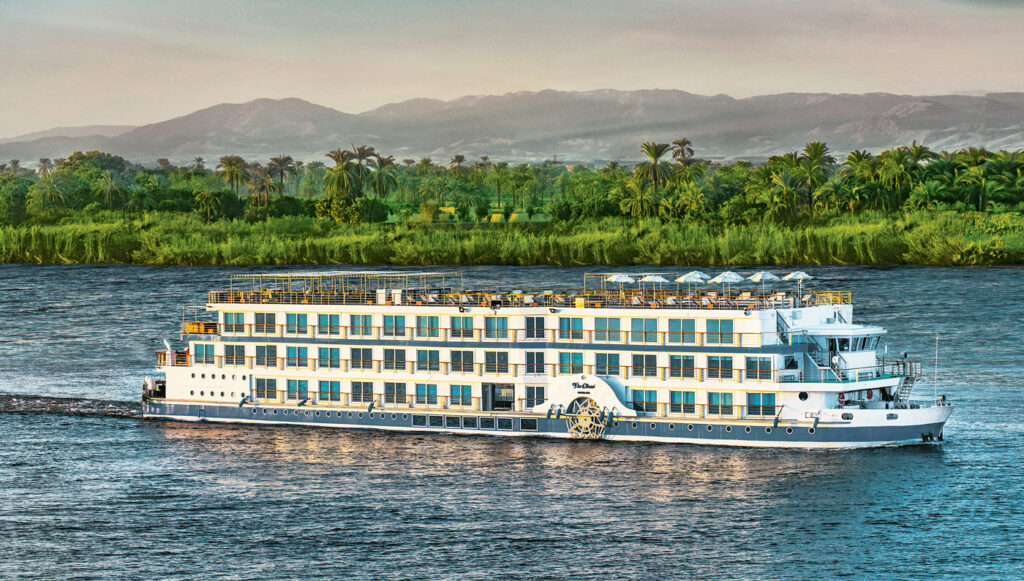
There were as many as 300 cruisers plying the waters between Aswan and Luxor until the tourism slump led to many being tied up. Like hotels, the ones still running range from slightly shabby to sumptuous, but almost all have some pool, a large rooftop area for sunbathing and watching the scenery, a restaurant, a bar, air-con, TV, minibars, and en-suite bathrooms. On a midrange budget, a cruise remains the easiest way to see the Nile in comfort. It can be ideal for families with older children who want to splash in a pool between archaeological visits or for people who wish to combine sightseeing with relaxation. The downside is that monuments are almost always seen with large groups, and the itineraries are generally inflexible. Boats are almost always moored together, and the sheer volume of traffic means that generators and air-con units overwhelm the peace of the river. The consensus from our research is that scrimping on cruises means substandard hygiene, no pool, cubby-hole cabins, and lots of hidden extras, which makes a felucca trip a far better option. The only way around this is to book an all-inclusive package to Egypt. Not only are the prices usually lower, but the agency guarantees the boat’s reliability in the case of cut-price cruises. The best deals are from Europe. Avoid booking through small hotels in Egypt: the hotels are not licensed as travel agencies, so you will have no recourse if there are problems. With the uncertain state of tourism at the time of writing, prices, which include all meals, entrance to monuments, and guides, varied considerably; you should check prices with the company before you book.
Life Onboard
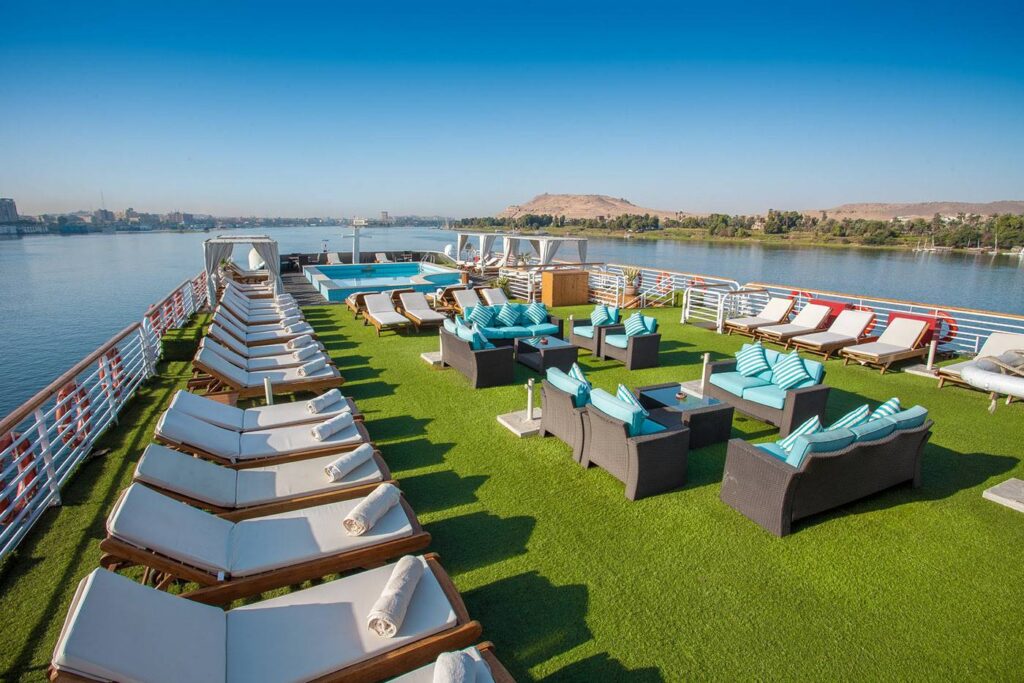
Nile cruiser packages usually include all meals and a range of onshore excursions. For example, on the most popular Luxor-Aswan cruise route, tours of Edfu Temple and Kom Ombo Temple and a tour of Luxor’s major West Bank sites are included. During the evenings, a range of optional entertainment is included onboard. Depending on the cruise, this can range from musical entertainment to Egyptology lectures. As with all cruises, onboard schedules are regimented, as they’re corralling a large group. All good Nile cruisers advertise their schedules, so you can check if you’re happy with the itinerary before booking. Cabin accommodation style ranges wildly. More deluxe-style boats offer cabins with big-picture windows, which make the most of the Nile views. Typically, lower-deck cabins are the cheapest cruise option. This is because your view will be impeded. If cabin views are essential, paying extra for an upper-deck cabin is worthwhile.
Nile Cruiser Routes and Itineraries
The most typical Nile cruiser route is between Luxor and Aswan, with cruises starting from either end. This route usually lasts three or four nights, though you will spend two nights onboard at the port at your start and end points. Note that more time than you think will be paid at the dock. Actual cruising time upon the river is limited. On a Luxor to Aswan or Aswan to Luxor cruise, typical itineraries include a guided tour of the highlight tourist attractions of the Valley of the Kings and Hatshepsut’s Temple on Luxor’s west bank, and the Temple of Karnak on Luxor’s east bank, stops while cruising along the river at Edfu and Kom Ombo for guided tours of the Temple of Horus and the Temple of Kom Ombo; and a guided tour of Philae Temple at Aswan.
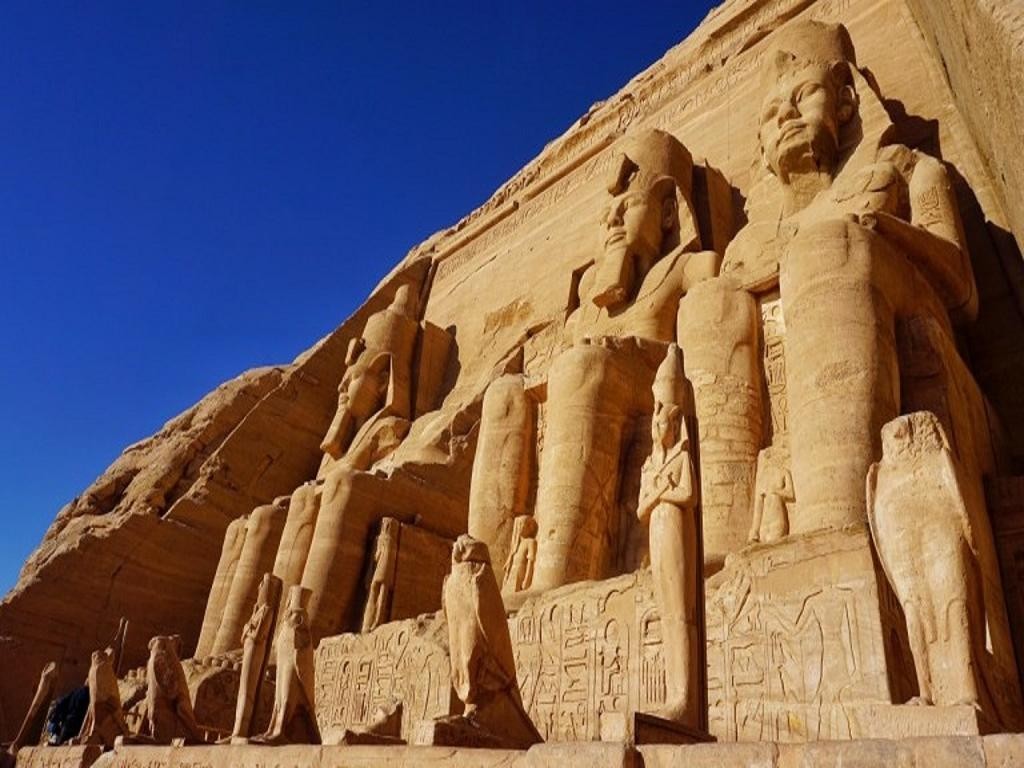
While docked in Aswan, optional excursions to the Temples of Abu Simbel are typically offered, and hot-air ballooning is usually available as an optional extra at Luxor. Some Nile cruisers offer longer cruises along this route – for example, a seven-night Luxor to Aswan cruise package. It’s important to note that on these longer cruises, the included guided tours and stops mostly stay the same, though a stop in Esna for a guided tour of the Temple of Khnum is usually thrown in. These more extended tours offer a less rushed Nile cruise experience with an itinerary that travels from Luxor to Aswan and then returns to Luxor (or vice versa) so that there is more time spent cruising the river. The offshore guided tours of the temples are more spaced out along the route.
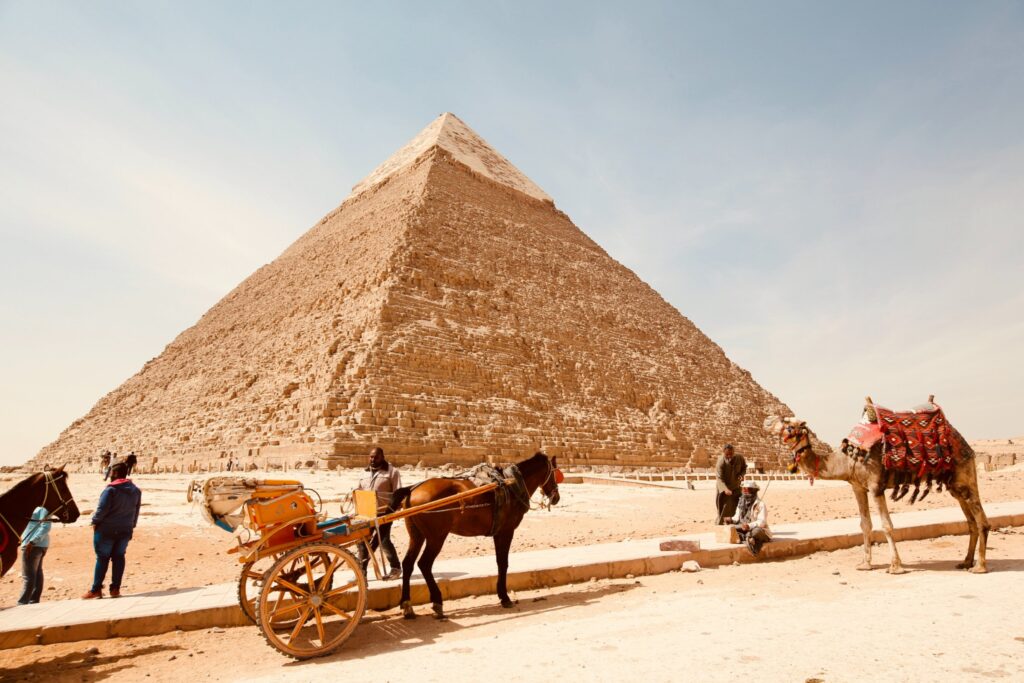
If you’re looking for this more extended Nile cruise option, the Cairo to Luxor or Luxor to Cairo route is much more exciting. This itinerary usually takes between nine and 11 nights. This route usually continues to Aswan, so you can opt to add that section as well. Compared to the number of boats heading up and down the Nile between Luxor and Aswan, only a handful of Nile cruisers ply the entire river route, and there are fewer sailings throughout the year. This itinerary is a dream trip for historically-minded travelers heading to all the major Ancient Egypt tourist attractions along the Nile between Cairo and Luxor. Typical stops along the route (heading north to south) are Beni Suef, to visit the Pyramids of Maydom and Hawara; Minya, to see the archaeological sites of Tell Al-Amarna, Tuna Al-Gebel, and Beni Hasan; Sohag to visit Abydos and its Temple of Seti I; and Qena to visit Dendara. As with the Luxor to Aswan cruises, sightseeing tours at your embarkation and disembarking points are also customarily included. In Cairo, there is usually a guided tour of the Giza Pyramids and the Egyptian Museum.
Other Types of Sailing Boats
Dahabiyas: A More Intimate and Personalized Nile Cruise
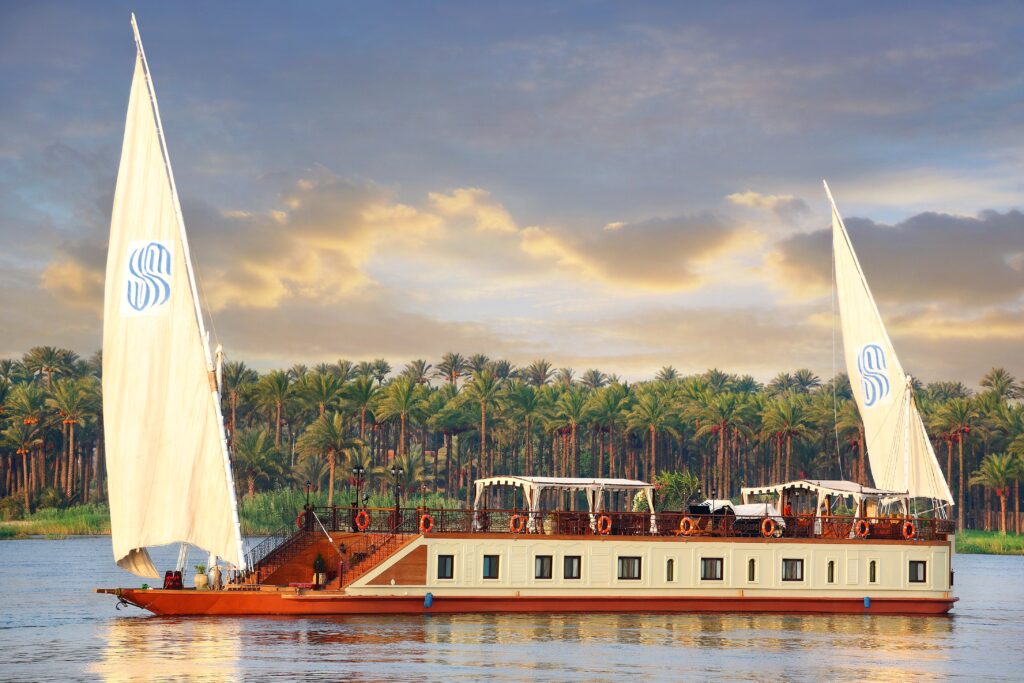
The most exclusive way to cruise the Nile is on a dahabiya. These sailing boats brim with character and hark back to the early days of Nile tourism, before steamboats began plying the river; all the famous 19th-century Nile tourists, including Gustave Flaubert and Florence Nightingale, made their journeys on dahabiyas. The boats generally only take between 10 and 20 passengers. You make up for what you lose in facilities (you won’t find a restaurant or swimming pool onboard) with personal service, itinerary flexibility, and a lack of crowds. If you are looking for a more intimate Nile cruise experience but still want the comfort of a cabin, dahabiyas are an excellent alternative to the big Nile cruisers. Instead of docking for the night amid a crowded Nile cruiser dock, dahabiyas usually anchor at Nile islands so passengers can taste the Nile at its most tranquil. Note that there is much less choice of boats and sailings than with Nile cruisers, so it’s best to organize and book as far as possible. Due to the small size of dahabiyas, you can also book an utterly private dahabiya cruise if you travel in a group. As with Nile cruisers, all meals (served communally on a dahabiya) are included in the cruise price. However, including guided tours and entry fees to tourist attractions depends on the individual cruise operator. Always check and compare schedules and inclusions.
Dahabiya Routes & Itineraries
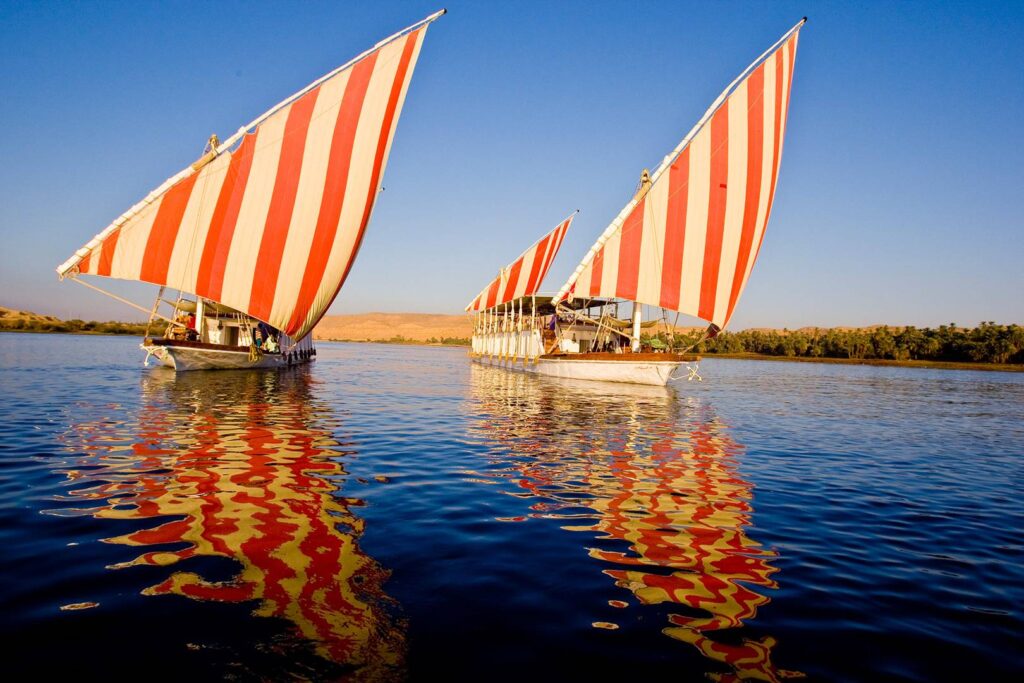
Dahabiyas typically sail between Esna (58 kilometers south of Luxor) and Aswan (with departures available from either end) with a three-night or four-night itinerary. Transfers from Luxor to Esna are included in the cruise price. The small size of these sailing boats means they can dock at places along the river that the large Nile cruisers can’t, so itineraries take in exciting monuments and places that the Nile cruisers miss. A typical three-night itinerary on a dahabiya, with guided tour excursions included, could encompass tours at Edfu’s Temple of Horus and Kom Ombo Temple, as well as stops at local riverside villages, the ancient quarry and monuments of Gebel El-Silsila, and the village of Daraw with its camel market.
Feluccas: The Adventure Travel Alternative

Feluccas are the traditional single lateen-sail boats of the Nile. This is a Nile cruise for the more adventurous. What you lose in facilities, you gain in scenery, tranquil star-filled nights, more time spent on the river, and a close-up experience of river life. Feluccas generally take up to eight passengers and have a two- to three-person crew that does the sailing and cooking during the trip. There are typically no bathroom facilities onboard. Passengers don’t expect to shower until they have disembarked, and the felucca anchors at a Nile island or bank when passengers ask for a toilet break. Passengers sleep on the cushioned deck at night. Bringing a sleeping bag’s a good idea, although feluccas usually provide plenty of blankets if needed.
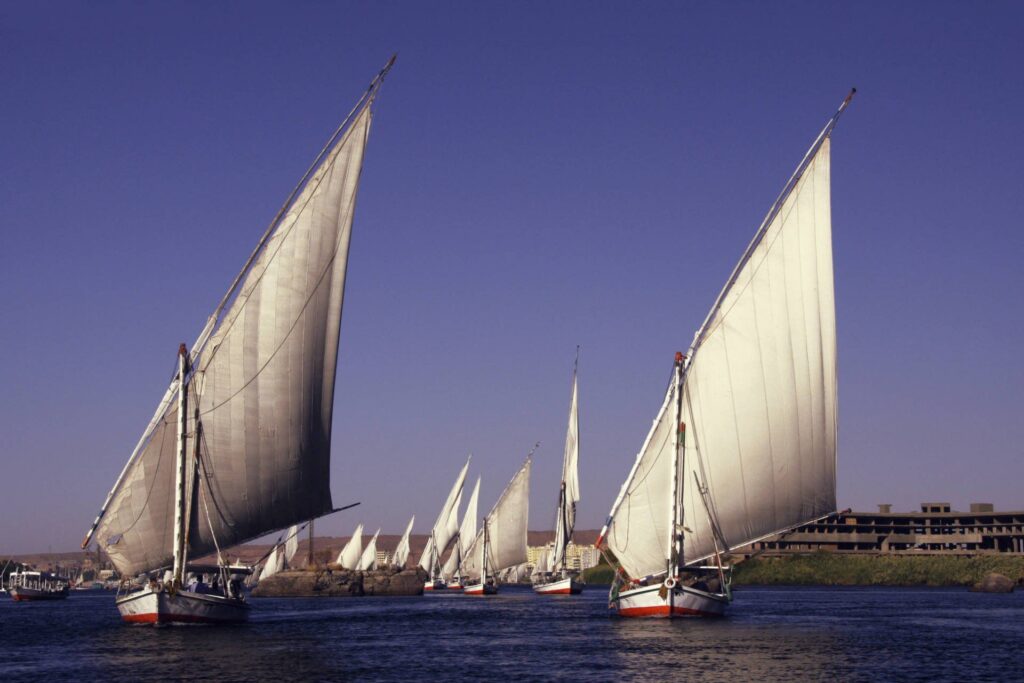
Meals are simple but tasty Egyptian home-style cooking, often kept vegetarian due to the only refrigeration being the onboard icebox. Time spent on a felucca is life reduced to the basics; don’t expect Wi-Fi onboard or electricity. At night, the felucca is lit by candle lanterns, while daytime cruising activity is lazing about on deck admiring the scenery or reading, with plenty of time for swim stops. Guided tours and monument fees are not included in a felucca cruise price. Felucca cruises are priced at the budget price point, which usually covers the cost of transport, meals, and copious cups of tea. Unlike Nile cruisers and dahabiyas, felucca cruises are often arranged and booked on-site in Aswan. Check out the boat before agreeing, and discuss what amenities will be available. For example, some feluccas will stock their boat with soft drinks and water to sell to passengers, while others expect the passengers to bring these extra supplies.
Felucca Routes & Itineraries
Feluccas start from Aswan to follow the flow of the river. Journey itineraries are generally sold as one-night, two-night, or three-night cruises. Itineraries are very relaxed (sailing speed depends entirely on the wind and weather conditions) and can be customized completely, with stops at local villages and lesser-visited sites along the river, such as Gebel El-Silsisa. The one-night option includes almost two full days on the river, so it’s a great choice if you want to experienceit’se life up close but are unsure if you can handle more time without creature comforts. One night, felucca cruises finish at Kom Ombo Temple. The most popular felucca cruise option is the two-night cruise, which stops at Kom Ombo and finishes at Edfu for the Temple of Horus. Three-night cruises disembark at Esna. Transfers to Luxor (or back to Aswan) at the end of the journey can be included in the cruise price. Still, as feluccas are all individually operated, all inclusion details must be agreed upon before sailing.
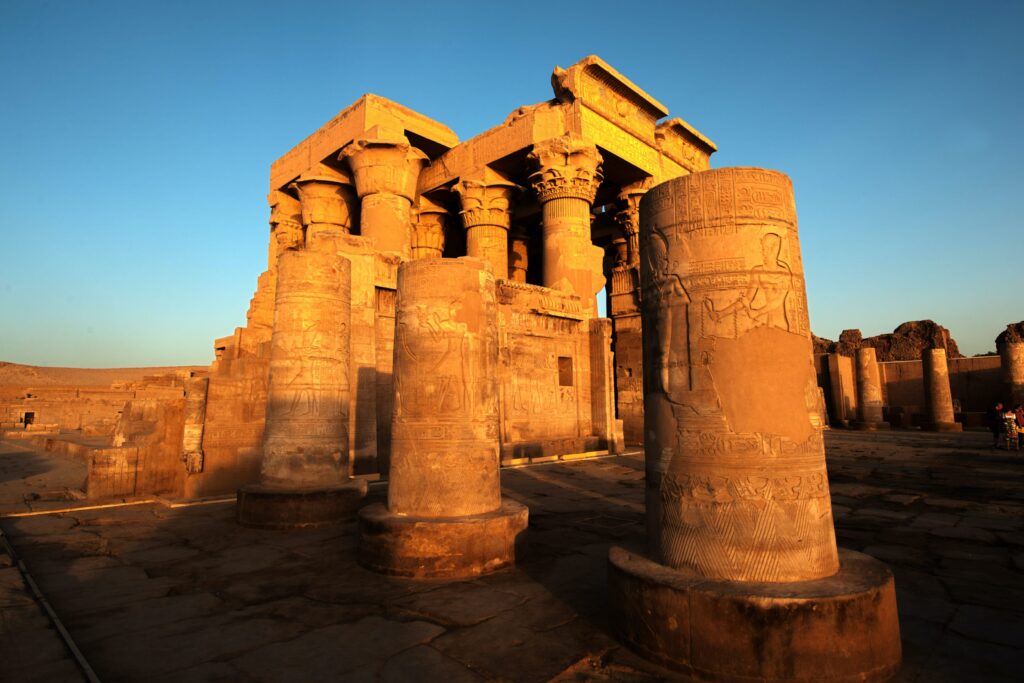
If you love the idea of felucca travel but don’t think you would be comfortable on a felucca overnight tour, don’t worry – you can experience cruising the Nile in this traditional style on a day trip. Luxor and Aswan are prime destinations for short felucca trips, usually priced by the hour. Some Nile cruiser itineraries offer a short felucca ride around Aswan’s islands as one of their included excursions at the dock. ShoAswan’sn felucca tours loop around the islands, usually stopping at Kitchener’s Island and on the west bank near the Monastery of St. Simeon. For a Kitchener’sed felucca tour, head south to Seheyl Island. For the best photography options, time your trip for just before sunset.

